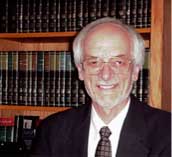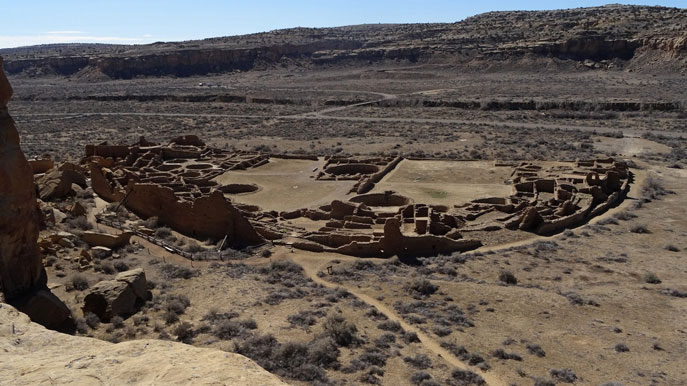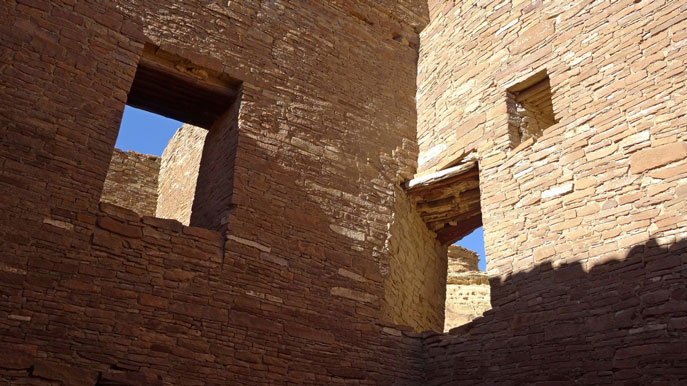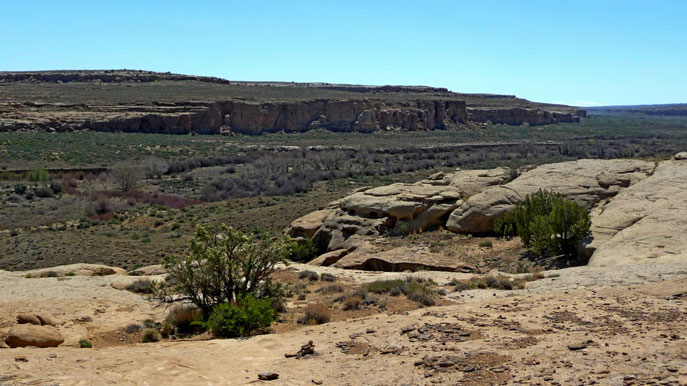Comments from the Chair
Climate Action & Adaptation Plan
The second draft of the City of San Antonio's (CoSA) Climate Action & Adaptation Plan (CAAP) has been released. Visit SA Climate Ready for background and to submit comments/answer survey. You are invited to read the entire draft CAAP. The plan is now much weaker than we had hoped, and as a result is likely to pass on October 17th. We support passage of the CAAP, and urge all members to come to city council to support CAAP passage, and, if possible, speak about specific provisions you want included. These could include some of the following:
- Prioritizing actions to cut GHG emissions. Decarbonization of our power plants and vehicles provide the bulk of our GHG emissions. Therefore, decarbonization should head any prioritized list.
- Establishing interim goals with a timeline. Closing our coal fired power plants will give us the biggest drop in GHG emissions. The interim steps toward accomplishing this shutdown must be defined and a target date for each plant set. We must shut down Spruce 1 and 2 before 2030.
- City Council needs to put the "public" back in our Public Utilities. We need public processes for resource generation planning at CPS and at SAWS for water resource planning.
- CPS Energy must continue to reduce the emissions factor of supplied electricity to reach an emissions factor of 0.0 kg CO2e / kWh by 2050.
- CPS must promote and incentivize fuel switching from natural gas to electric for existing buildings, including industrial process applications.
- CPS Energy will, together with CoSA and the CAAP implementation structure, establish a public resource planning working group including representatives from the City, CPS Energy, key stakeholders, and the general public to make power generation policy recommendations best able to move the City to 100-percent renewable energy, submitted to COSA for final approval. This group will also:
- review potential obstacles to the 2030 goal above and consider recommendations for modification as needed.
- evaluate and recommend implementing energy storage and load shifting technologies to support efforts to develop a more resilient grid to maximize the penetration of renewable generation.
- will evaluate and recommend increasing the penetration of renewable, energy efficiency, demand response, and storage resources to supply a minimum of 90% of San Antonio’s energy capacity by 2040 and 100% by 2050. This assumes the remaining generation is nuclear until it is phased out and replaced by clean energy.
- Continuing San Antonio’s leadership in building codes by continually adopting the most recent update to the IECC code, with the goal of adopting a Zero Net Energy (ZNE) code for all new buildings and substantial rehabilitations by 2040, taking into consideration technical and economic feasibility.
- Continuing to support and expand the energy efficiency and green building programs functioning within the City, such as the CPS Energy STEP program, with a goal of reducing city-wide annual building energy use 15% by 2030 and 40% by 2040.
- Transitioning to carbon-free transport by implementing strategies to accelerate the adoption of electric or other carbon-free personal vehicles, trucks, transit, and freight to reach 100% penetration by 2050.
- Reducing landfilled commercial waste 50% by 2035.
- Pursuing zero-landfill waste practices for all construction projects by 2035.
- Converting all COSA and Public Utility fleet passenger vehicles and small trucks to carbon-free vehicles by 2025.
Budget passes with increased contributions from utilities
Council passed a new CoSA Budget on September 12th. The FY2020 Budget includes a 4% (of revenue) contribution from SAWS, up from 2.7% after long efforts by Councilman Courage (D9), and over Mr. Puente’s opposition. CPS Energy's contribution, by contrast, is about 12% of their revenue.
CPS continues to use the summer energy demand season to generate large short-term profits by running its coal plants at full strength. This is bad for our health and for our climate, but good for CPS and COSA Budgets. This conflicted situation is unsustainable and must be changed.
It's time to end the plastic scourge
We have campaigned for several years to get single-use plastic bags removed from our stores, and thus our environment. Recent news shows us gigantic plastic waste oceanic gyres and mountains, with terrible images of wildlife around the world killed by this waste; filling their stomachs, or strangling their necks or extremities, etc.
We are expanding our campaign and urging our home grocery giant H-E-B to examine its use of plastics in all of its stores and all of its product lines. Lately, we see stores with two potatoes for sale on a plastic tray wrapped in plastic wrap. Is this necessary or in any way helpful? Surely this is an example of unnecessary use of plastic that ends up contaminating our environment, as well as adding cost.
Please visit your local store, and speak to the manager about their excessive plastic usage, and fill out a comment card. H-E-B needs feedback urging them (and Walmart, Walgreens, Lowe’s etc.) to cut back their plastic.
by Terry Burns, M.D., Alamo Group Chair
Inequality and Climate Change
T. Michael Brune, Executive Director of the Sierra Club, inspired the topic of this evening’s presentation when he wrote in Sierra magazine:
[I]t’s become increasingly obvious that climate change and economic and environmental inequality are closely linked. … We cannot successfully tackle either climate change or inequality without addressing both.
You are invited to attend the next General Meeting of the Alamo Group, where Michael McGuire, PhD will discuss how climate change is rooted in economic inequality.
Tuesday, October 15th
6:00 pm - doors open; 6:15 - announcements; 6:30 pm - program starts
William R. Sinkin Eco Centro, 1802 North Main Avenue
Map | Printable flyer
This meeting is open to the public
Economic inequality is indeed one of the main causes of climate change. Destructive disparities are likely to skyrocket in the future if effective policies are not found and implemented. Outlining the climate policies of presidential candidates, and the Oil and Gas industry, reveals a range of approaches to policy and sets the stage for a lively discussion of the Sierra Club’s climate policy.

Michael McGuire earned his Ph.D. in Economics from Syracuse University specializing in Public Finance and Urban/Regional Economics. He taught Economics in the School of Business and Administration of the University of the Incarnate Word (UIW), 1987-2018, and now serves as Professor Emeritus of Economics at UIW. He was a Fulbright Scholar to the Universidad Centroamericana José Simeón Cañas of El Salvador (UCA), where he taught economics in the Graduate School of Finance, 1989-1991 and in the summers, 1992-2017. His research focuses on the public finance of inclusive economic development.
Chaco Culture National Historic Park
Chaco Culture NHP, in northwestern New Mexico, is thought to have been the center of Ancestral Puebloan (formerly termed Anasazi) civilization during the 9th to 13th centuries AD, though the area was inhabited as long as 10,000 years ago. Here’s the park website and the extensive Wikipedia page.
Chaco and many other Ancestral Puebloan sites across the Four Corners region were abandoned by the end of the 13th century. The people migrated and are claimed as ancestors by the Hopi, Zuni, Pueblo, Acoma and other contemporary tribes. Here’s another good article on the culture with lots of pictures.
There are various ruins to be visited in the main part of the park and some nice hikes. In particular there is the Pueblo Alto loop trail, 5.4 miles around the bluff above Pueblo Bonito. Some of the key Chacoan roads, in particular the Great North Road (PDF), radiated from Pueblo Alto.
The park was certified as an International Dark Sky site by the International Dark Sky Association (IDA). There is an observatory and auditorium and the park partners with the Albuquerque Astronomical Society for programming.

Chaco has a campground that takes reservations. You can drive in from the northeast or southwest, but note that the roads are unpaved and rather rough until entering the park; high clearance is best. Not recommended for RVs, and with sedans, be sure to watch the roads closely.

Inside Pueblo Bonito. A number of excavation and stabilization projects were done, particularly during 1920-1927 by the National Geographic Society. The stonework in this picture is veneer over a core. It's largely unrestored and the window lintels are likely original. There are different styles of very skillfully done stonework at the various ruins; here’s an article with closeup pictures. The stonework required much more effort than the simple utilitarian styles used at many other sites. Vast amounts of wood are believed to have been carried from mountains more than 50 miles away.

Looking north across Chaco Wash; the Peñasco Blanco ruin is not far behind. Pueblo Bonito is about 3 miles around the bend to the right, on the north side. Pueblo Alto is on top of the bluff also about 3 miles ahead center. The area was subject to cattle grazing prior to establishment of the park, resulting in substantial erosion, and now the wash is 6’ to 12’ deep in many areas. It is thought to have been only a few feet deep prior.

Outings: The Call of the Wild
Visit the Alamo Sierra Club Outings page on Meetup for detailed information about all of our upcoming Sierra Club Outings.
The Alamo Sierran Newsletter
Richard Alles, Editor
Published by The Alamo Group of the Sierra Club, P.O. Box 6443, San Antonio, TX 78209, AlamoSierraClub.org.
The Alamo Group is one of 13 regional groups within the Lone Star Chapter of the Sierra Club.
Changed your mailing address?
Have you moved? Let us know by sending your old address, your new address and your member number (look on the upper left corner of your mailing label) to: address.changes@sierraclub.org.
Go online for the latest news and events
 |